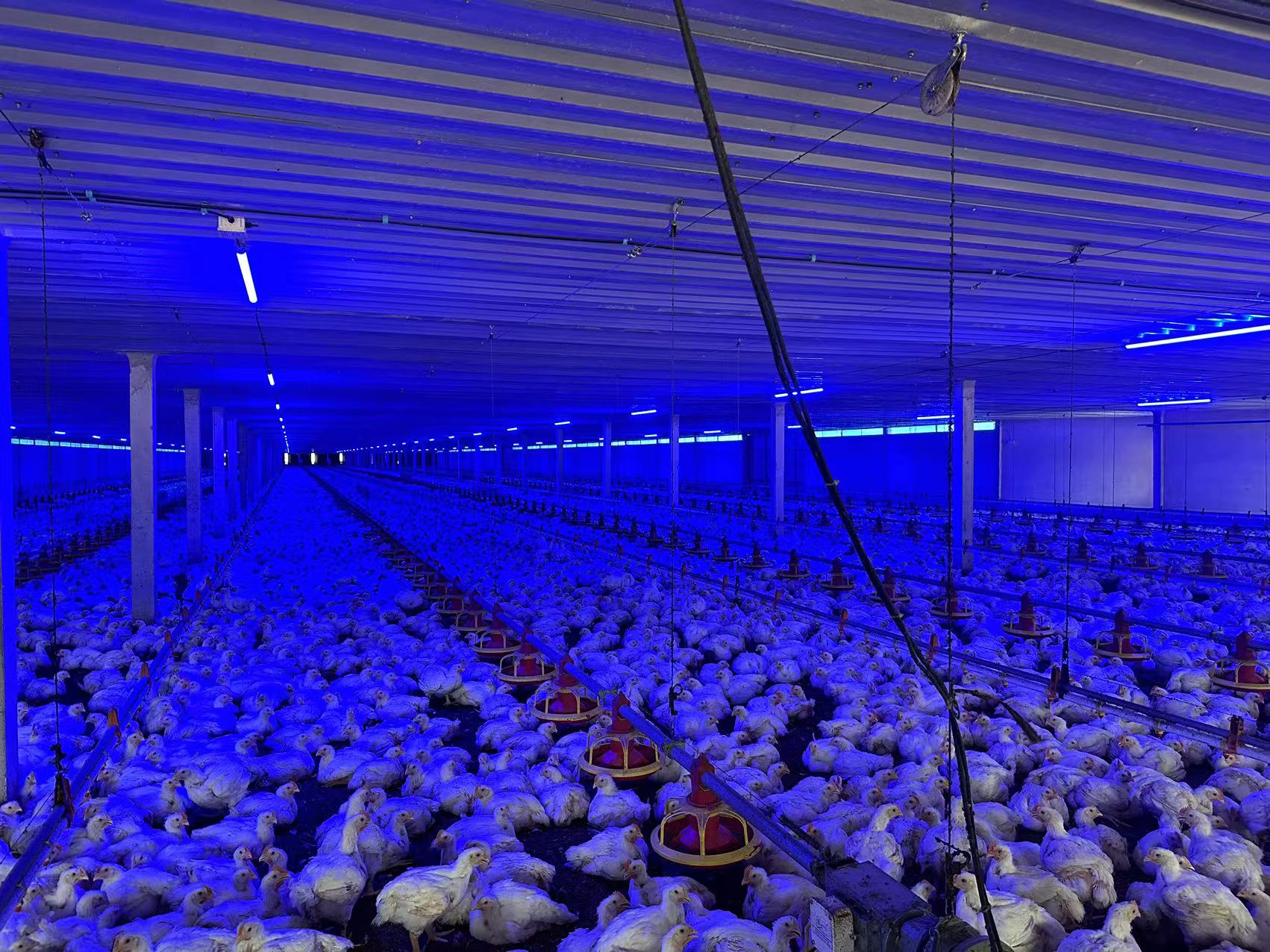Lighting plays a vital role in poultry welfare and production. It affects various flock attributes such as growth rate, habits, and productivity. It synchronizes circadian rhythms to encourage natural feeding patterns. While the importance of poultry house lighting is understood, common mistakes can impact flocks if not addressed. Taking time to design a program tailored to each flock’s needs helps create an ideal environment for birds to thrive without stressors limiting performance.
Understanding the Importance of Proper Lighting
Lighting plays a key role in poultry production. Proper, continuous poultry house lighting encourages feeding, which drives weight gain, muscle development, and overall well-being. For layers, lighting duration impacts egg production.
A well-designed LED poultry lighting program considers the specific birds and production goals. Broilers require different lighting than layers to support their rapid growth rates. Pullets also have lighting needs distinct from laying hens. Tailoring programs keep birds performing optimally while avoiding health and welfare issues.
Common Mistakes in Poultry House Lighting
Several common oversights can potentially disrupt optimal lighting management in poultry houses. When left unaddressed, these mistakes can negatively impact flock performance over time:
- Inconsistent Lighting Schedules
Having irregular start/stop times disrupts the natural circadian rhythms chickens rely on. Over weeks/months, this causes prolonged low-level stress that can diminish productivity. Lower feed intake, slower growth rates, or fewer egg numbers may result as stress hormones rise. Providing a consistent poultry house lighting routine allows birds to anticipate daylight periods and rest, minimizing long-term stress impacts.
- Inadequate Light Intensity
Not supplying enough lighting makes it challenging for chickens to see and safely access food/water as intended. Over the grow-out/laying cycle, birds may be less active and socialize/lay eggs less consistently as a result. Proper light intensity supports key traits like rapid weight gain or maximum egg production facilities depend on.
- Incorrect Light Spectrum
Using bulbs lacking optimal colors prevents stimulation of hormones regulating vital metabolic/reproductive processes. Performance may be inefficient over time if the spectrum is disrupted, such as inconsistent egg-laying patterns or quality declines. LED lighting for poultry houses should replicate what chickens naturally receive for consistent success.
- Overlooking Seasonal Adjustments
Not gradually mimicking the fluctuating day lengths of each season interrupts essential behavioral/biological signals chickens anticipate. For layers, this disruption could cause molting issues or temporary dips in numbers when continuity is needed. Broilers may face added stress when growth rates require optimal stability during each period.
- Poor Placement of Lighting Fixtures
Uneven spacing leads to unintended shadows that are too dim for long-term good welfare as chickens avoid darker areas naturally. This can compound over the flock cycle if distribution issues are not addressed proactively.
- Neglecting Maintenance
Allowing dirt/wear to accumulate gradually diminishes the poultry house lighting system before issues are spotted and fixed. Catching small problems during inspection optimizes consistency long-term to fully support production demands throughout each flock’s time indoors.
Best Practices for Optimal Poultry House Lighting
Several proven techniques exist to establish a well-managed lighting program that avoids common mistakes. Following these practices helps support flock productivity and welfare standards in the operation:
- Establishing a Consistent Schedule
Taking the time upfront to design age-appropriate programs for each flock that adheres to a regular schedule avoids stressing birds and ensures maximal productivity throughout their grow-out or production period. A consistent schedule provides birds with a reliable photoperiod they can anticipate, promoting natural behaviors and optimizing feed intake.
- Ensuring Adequate Intensity and Spectrum
Using efficient bulbs that deliver the right volumes and colors of light encourages natural development, feeding behaviors, metabolism, and production cycles while avoiding potential welfare issues. Adequate intensity allows birds safe movement and feeding throughout housing facilities.
- Adjusting Lighting Schedules Seasonally
Making gradual adjustments mimics the natural fluctuations birds expect each season, signaling when to molt or transition production patterns without prompting unnecessary stress responses. Maintaining consistent period lengths supports natural biorhythms.
- Properly Positioning Fixtures for Uniform Light Distribution
Strategic placement ensures all indoor areas receive equal illumination so birds can freely access feed and water while spending time wherever space allows. Proper distribution improves growth rates and productivity figures farm-wide.
- Implementing a Regular Maintenance Schedule
Detecting early signs of dirt buildup, diminishing output, or potential component wear allows prompt repairs before poultry house lighting quality declines altogether. Inspections optimize the lighting system to deliver consistent, high-quality illumination promoting bird health throughout each flock’s lifetime indoors.
Conclusion
Proper lighting management supports poultry health, welfare, and productivity. The seasoned brand Hontech-Wins has solid expertise in developing reliable, efficient poultry LED lighting solutions for livestock lighting. Its flicker-free poultry lights feature automatic or manual control, dimming, high lifespan, and optimal distribution. You can rely on the brand’s innovative lighting solutions to create ideal house conditions for optimum flock performance. Whether you need to upgrade or replace poultry LED lighting, the Hontech-Wins website is a one-stop resource with detailed options for all poultry operation needs.

